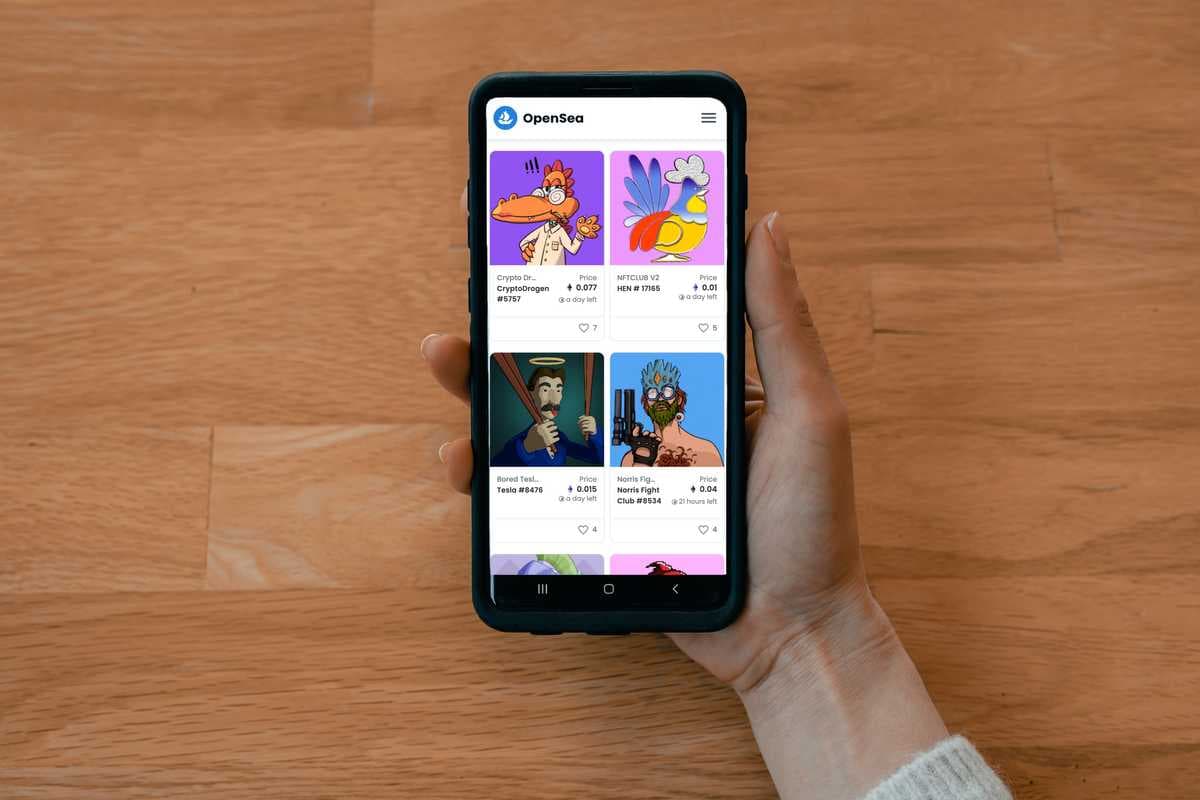An NFT is a type of digital certificate that ensures ownership of a digital asset. These NFTs are built on blockchain technology, usually Ethereum. Artists can monetize their work by minting digital assets (art, music, and articles).
Learning NFT minting can be easy with the right tools. One thing you’ll need is some background in the crypto space. If you wish to get updated about the crypto space, you could also read our list of the best NFT Podcasts.
Contents
- What is NFT Minting?
- Why is NFT Minting Important?
- How does the Process of Minting Occur?
- How Much Does NFT Minting Cost?
- NFT Minting Advantages
- NFT Minting Disadvantages
- Conclusion
What is NFT Minting?
Just like how new coins are “minted” to get them into circulation amongst the public, NFTs are also “minted” and added to the blockchain.
Usually, NFTs are minted on platforms called marketplaces that facilitate trading these tokens. Globally, platforms like OpenSea and Rarible are some of the largest NFT marketplaces.
Why is NFT Minting Important?
The selling point of an NFT is that it guarantees ownership of a unique digital asset. Minting digital assets as NFTs is one way for artists to monetize their work, ensuring the artists get credit for the original creation.
Creators of NFTs are recorded in a public ledger. In this ledger, the artist can set a fee (referred to as a royalty) for every time the digital asset is sold in the future and earn passive income over time.
How does the Process of Minting Occur?
Following are the steps involved in the process of NFT Minting:
1. Setting Up a Crypto Wallet
Before minting an NFT, users are required to set up a crypto wallet.
2. Create an Asset
Minting NFTs starts with choosing the asset you want to mint. Assume you want to create a digital work of art with an NFT. You will need to convert your digital artwork into blockchain data. Ethereum is the preferred blockchain for NFTs.
3. Purchase Tokens
Your cryptocurrency must be compatible with your chosen blockchain. Wallet services and marketplaces are impacted by blockchain technology. It is important to note, however, that some wallet services and marketplaces only work with specific others.
4. Add Crypto to Non-Custodial Wallet
An internet-connected hot wallet will be required to store your crypto. NFT minting requires a non-custodial wallet if you want total control over your assets.
5. Selecting an NFT Marketplace
Several markets are suited to NFT miners, such as OpenSea (considered the largest NFT marketplace). In addition to minting fees, some exchanges charge customers for setting up accounts, listing NFTs, and trading on their platform. Make sure you choose your marketplace wisely!

How Much Does NFT Minting Cost?
Gas fees are commonly associated with crypto transactions; you must pay them to mint an NFT. The marketplace may also charge you a fee. There are several ways to make money with NFTs. It could be through renting your NFTs, earning royalties on them, staking your NFTs, or flipping your NFTs.
NFT Minting Advantages
Democratize Ownership
By forming an NFT, many parties can hold a share of the digital asset.
Sell Distinctive Digital Assets
Artists may get a percentage of future profits in addition to trading, buying, and selling shares in assets.
Store and Preserve Value
The asset’s value can be stored in a tangible form, similar to how a genuine coin can be manufactured. Digital wealth is usually considered safe due to the security of the blockchain and the scarcity of NFTs.
NFT Minting Disadvantages
Minting NFTs Are Not Eco-Friendly
A common concern when minting NFTs is that they aren’t the most eco-friendly way of transacting. The process of minting requires computers to solve specific algorithms and these computers consume a notable amount of energy, leading to a high carbon footprint.
Risky Business
There are risks associated with NFTs, just like with any investment. Due to their unregulated nature and the mania surrounding them, they could be volatile: buyers may purchase a costly NFT only to discover later that it isn’t worth much.
Conclusion
For artists, musicians, content producers, and others, the realm of NFTs is worth trying. The ability to monetize work long after the sale can be a game-changer. Digital labor can be converted into blockchain-based assets that could disrupt the compensation mechanism for creators.









